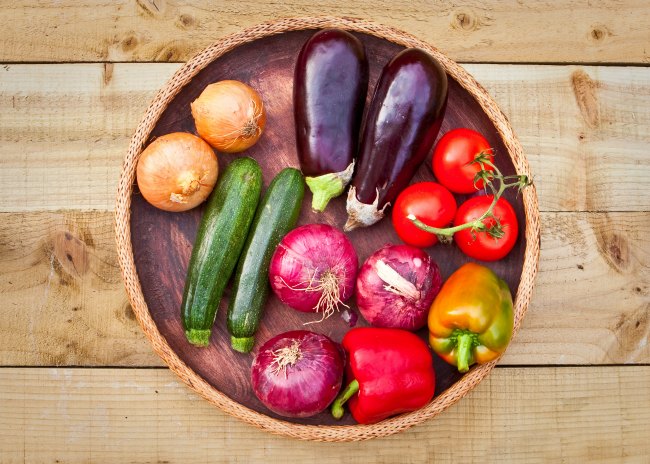

You may be following workout routines and exercising 7X a week 2 hours a day, counting calories religiously in an attempt to blast your belly fat.
While your six-pack maybe coming out to play 😉 , what if you could burn fat 2x as fast with half the efforts?
To investigate into this issue, we must first determine what really affects your weight loss efforts and help you reduce body fat for good…
Is it determination?
Your hard work?
Or your ability to say no?
All of those play a role, but if you ask anyone who has been doing research on weight loss for years, they’ll give you a much different response:
Insulin Sensitivity.
Dr. Christopher Gardner, Director of Nutrition Studies at the Stanford Prevention Research Center and Professor of Medicine at Stanford University, is back with us discuss his recent research findings and thoughts on weight loss. Dr. Gardner’s recent work includes the A to Z Comparative Weight Loss Study that was published in Journal of the American Medical Association.

Why Insulin Sensitivity Is Key to Weight Loss
Q: Some people are more successful with a low-carb diet. Some people are more successful with low-fat diet depending on their insulin resistant status. Can you elaborate on that a little bit?
Dr. Gardner: Sure. That’s kind of an easy one. The job of insulin is to convert carbohydrate into glucose.
Without going into a lot of complicated biochemistry, most of the carbohydrate you eat, even though in comes in different forms, is converted to glucose at some point in your blood (After you’ve had a meal and absorbed the nutrients from the meal which, for most people, includes some carbohydrate.)
You don’t want to be hypoglycemic. That’s being diabetic.
Your body needs to take the glucose you just ate and put it away in the cells that need it. Insulin is the hormone that you make that opens the doors to the cells and lets the glucose in.
So there’s a condition called insulin resistance, which is challenging enough to describe. I’ll try to do it in just a minute.
If you’re insulin resistant, this is the very characteristic of Type 2 diabetics. Type 1 diabetics get diabetes when they’re kids because the cells that make insulin destroy themselves. It’s an autoimmune disease. So this is not the same as that one.

Your cells do make insulin. You’re making insulin in response to a meal. Your glucose is in your blood, but it is not getting picked up by the cells. When you look more closely, you see that the cell doors aren’t opening to let the glucose in.
When your body recognises that and the blood glucose levels are down, your body makes more insulin, hoping that now it’ll listen. It still doesn’t listen and you make more insulin. Eventually, you make enough insulin that you can put the glucose away.
You end up what we call being hyper insulin anemic. You’re not diabetic yet, but your insulin’s going higher and higher and higher. At some point, you actually can’t make any more insulin and you become Type 2 diabetic.
What’s interesting about this is that you could look at two people:
They’re the same height, the same weight. One of them has really great insulin sensitivity. He/she just eat a meal and all the glucose gets put away. Another person who looks at face value almost the same can be metabolically really different. And this person is struggling to put that glucose away.
So let’s flip this back to diets. If you’re eating a low-fat diet, you’re not getting a lot of calories from fat or protein especially since protein level doesn’t vary that much. Mostly what you’re replacing the fat with is carbs, and carbs are glucose.
If someone is insulin resistant, giving this person a lower and lower fat diet is a higher and higher carb diet. And this person is struggling with that.

We think those are the folks, when you cut back on the carbs and replace that with fat, they do better. Then their insulin isn’t struggling so much to put all the carbohydrate away.
Whereas the flip side is, if you are insulin sensitive, if you’re lucky enough that your insulin really works well at opening those doors, then you do better on a low-fat diet.
There’s room for both those types of metabolic conditions to do well on different diets. That’s one of the more consistent messages we’ve seen across four or five studies now.
Why Medical Research Studies Maybe Biased
Q: That’s exciting. Has this finding surprised you since you’ve been in the vegetarian community for a while, and the low-fat message was so prominent?
Dr. Gardner: It did at first. But now we need to dig to one level deeper. Ready for this?
Part of the problem also has been we lump carbs and fats together as one huge world.

What about sugary carbs versus the kind of carbs you get that come with a lot of fibre and a lot of starch?
In our current study, an interesting twist that we’re using in this whole thing is this: We’re asking people to go as low in carbs or fats as they can. But a lot of instruction goes into not allowing them to give up on the quality of what they’re eating.
Here’s an example. In both low-carb and low fat, they’re asked to eliminate or minimise all added sugars. Added sugar’s low fat, but it’s not quality low fat. And they’re both told to eliminate refined grains, so white flour. Try to get rid of everything with white flour.
How about vegetables?
Vegetables are actually mostly carbs. There’s a little protein in them and there’s usually not much fat in a vegetable.
Both groups are told to eat as many vegetables as they can. I think that this might minimise the difference we see in the groups in our weight loss study. They’re actually both getting a high quality diet.

Let me flip that back. In an Obesity Society meeting in Boston, I had to give a talk on why diet studies are so confusing. I brought up this study that just came out two months ago and it said, low-carb is better than low-fat. It was a weight loss study done out of Tulane. It was a bunch of good researchers. They actually did a lot of really great things in the study.
Except for this one point. They called it low-carb and they called it low-fat. The low-carb group was initially eating about 240 grams of carbs a day and their goal was to get to 40 grams of carbs. That’s trying to wipe out five-sixths of their normal carbohydrate intake. That’s a pretty ambitious goal.
The low-fat group was eating about 35% of calories from fat. Their goal was to get to 30% fat. So theirs cut out one-seventh of their fat. That’s not very ambitious.
So, going into the study, one group had a very ambitious goal. The other had a modestly ambitious goal.
I’m not sure that’s a fair way to compare low-carb to low-fat. As they reported out on the diet data, they did a nice job of collecting diet data, in fact, better than many of my other colleagues, there was one particular fact that really stuck out to me.

They were monitoring how much fiber they were getting. Twelve months out, at the end of the study, the low-carb group was getting 15 grams of fiber a day. The goals are 25 to 40 grams, so 15 is pretty minimal. I can imagine, if somebody’s really cutting back on their carbs, they’re not getting a lot of fiber. That’s fair.
Then you looked at the low-fat group and they were getting 15 grams of carbs a day. Wait, okay. I actually said this at this meeting. There were about a thousand people listening. I said, how many dietitians are in the audience?
If I hired you to be in my study and asked people to follow a low-fat diet in an ambitious and quality way, how many of you would be embarrassed if, at the end of a year, your research participants were getting 15 grams a day when low-fat could be whole grains and beans and fiber dense things. Don’t you guys think 15 is embarrassing?
They said, yes.
The poor public, I can totally understand why are they’re confused. I’m not all that smart but it’s my field. I have a PhD in this thing.
I look for those kinds of things and it’s relatively easy for me to pick out some flaws but hard for me to explain to the average person why this study said low-carb won and this study said low-fat won. When you look, it kind of looks like the researchers had a favorite and kind of set theirs up to win.
This leaves us to the end of this part.
And stay tuned for the full podcast on this series with Dr. Christopher Gardner.


